Thorough Description of the New Nissan Note (E11)
ReportOctober 31, 2021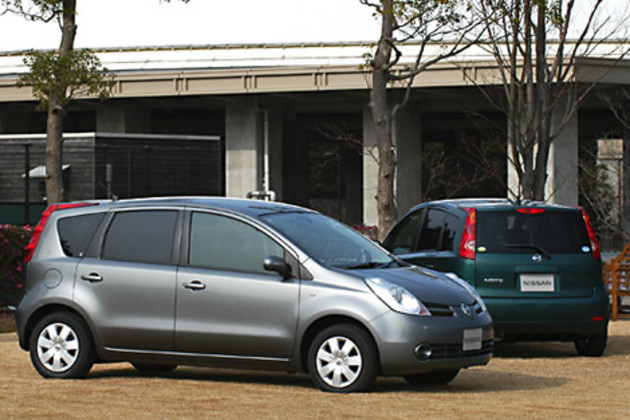
Brand new, the fourth model in the Nissan compact car series
When we think of Nissan compact cars, the first thing that comes to mind is the March, followed by the Cube, which is based on the March but with enhanced utility.
Then there is the Tida, a short wagon that has recently joined the lineup. To add to this, the Cube has the Cube Cubic and the Tida has the Tida Latio. Even with such a wide range of models, Nissan has introduced more compact models.
The new addition to the lineup is called the Note. As of last September, Nissan unveiled the outline of all the models that will be released in 2004, so many of you may be familiar with the name and shape.
The Note, like the rest of the compact car series, is based on the March platform. In fact, there is a reason why Nissan has expanded its compact car lineup to this extent. Honda has four models based on the Fit (Fit Aria, Mobilio, Mobilio Spike), and Toyota has eight models based on the Vitz (Platz, Sienta, Ist, bB, Porte, Fun Cargo, and Wilsify). Considering the size of Nissan, the addition of the Note to their lineup of six models, including its derivatives, is a natural way to increase their competitiveness.
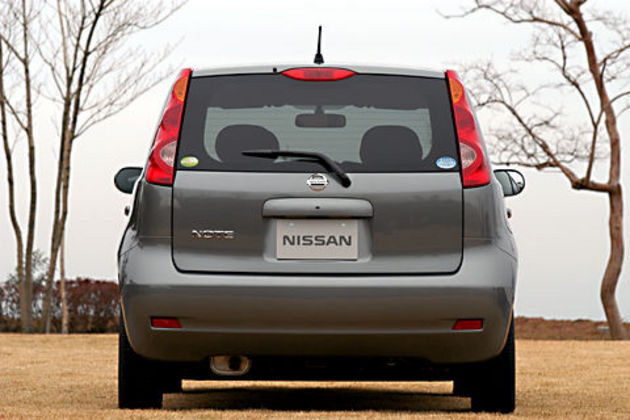
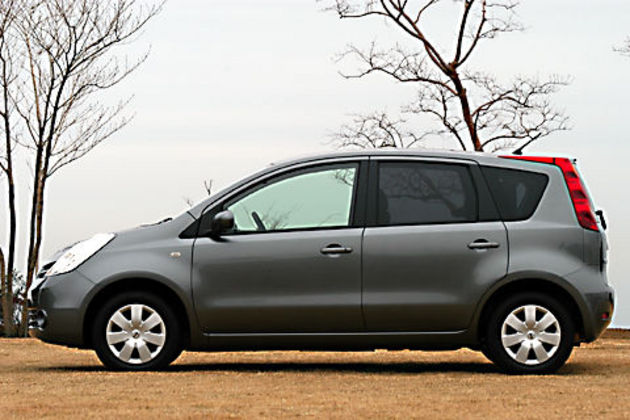
A 5-number short wagon that doesn't push the envelope

The Note has dimensions of 3990mm in length, 1690mm in width, and 1635mm in height (1645mm for 4WD). Compact models often have an overall width of 1695mm, which is just short of the 5-number mark, but the Note is just 5mm shorter than this. This is the result of choosing a well-balanced figure without focusing on the catalog value.
Looking at the car as a whole, the styling is that of a short wagon. It is not a station wagon with an extended roof like a sedan, but more like a minivan with a massive styling.
The round headlights and winged grille have something in common with the March. The rear of the car has an almost vertical gate, and the combination lights that wrap around the roof are distinctive. The side lines have a strong minivan-like image.
The design is solid and has a strong presence that gives a sense of security. In the photo, it looks like a minivan, but it is probably due to this solid atmosphere.
Easy-to-handle instrument panel with a sense of volume and gentleness
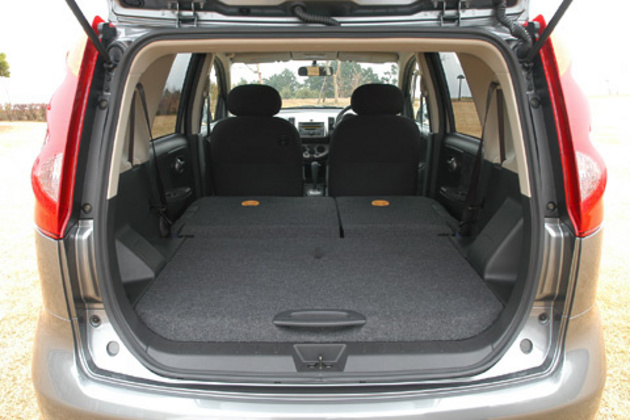
While the word instrument panel or dashboard conjures up images of flat surfaces, the instrument panel design of the Note is full of volume with its bold use of curved surfaces and curves.
The instrument panel is gently curved from the front window and is covered with soft leather, giving it a high quality feel. The front part of the front passenger seat is particularly eye-catching. Most modern cars are equipped with a front passenger airbag, which has a slight cut (line) to allow the airbag to deploy, but the Note has no such cut due to the use of soft upholstery, resulting in a clean surface.
The instrument panel is designed in such a way that it is divided into two sections, upper and lower, with a semi-circular panel in the center of the lower section, and a combination of speed and tachometer gauges placed behind the steering wheel. The fuel gauge is placed in the center and there is no water temperature gauge. The center of the instrument panel is an audio space.
The center of the upper part of the instrument panel is the audio space. A monitor is installed in the top row.
Spacious interior space in a compact body
The Note is a sibling of the Teada, and uses the same dimensions for the wheelbase. In terms of packaging, it is the same as a short wagon with four doors and a rear hatch. However, the overall length of the Note is shorter than that of the Teada.
While the overall length is less than 4 meters, the interior length is a long 1835mm. While the overall length is less than 4 meters, the interior length is 1835 mm, a difference of 200 mm compared to the 2035 mm of the Teada, which is known for its long interior length. However, if we compare the overall length, the Teada is 215mm longer than the Note. It is clear from the data how well the packaging has been done.
The equipment available is also satisfactory. There are three grades: 15RX, 15E, and 15S. The 15S and 15E are available with electrically assisted 4WD. The 15S and 15E also come with an electrically power assisted 4WD system, and the 15E has a V package with a few extra features, such as an intelligent key, immobilizer, and automatic air conditioning.
The Teada, which is similar to the Note in terms of styling, has a rear seat slide mechanism, but the Note does not have this feature. Since the Note is a car that aims to make the most of its short length, we decided not to install a sliding mechanism in the rear and fixed the rear seats in the most convenient position. Although this will limit the interior arrangement, it is the right choice as there is no need to burden users who do not need the rear seat slide with extra cost.
Sedan-like usability created by a two-stage trunk
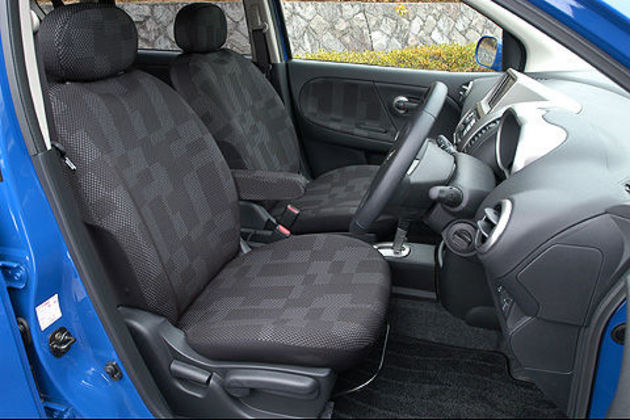
While wagons and hatchbacks can carry large cargo, they have the disadvantage of being completely visible from the outside. To overcome this disadvantage, the Note uses a two-level trunk.
To put it simply, it is a larger version of the luggage floor box (sub-trunk), but the capacity is not at the level of the floor box. With a depth of 250mm, it is possible to fit a B-type baby stroller inside the box.
Also, if you remove the lid of the box, you can carry two extra large suitcases.
The lid can also be used as a partition board, allowing you to divide your luggage into sections by standing it on the removed part of the lid. The most significant advantage of this system is not so much the tidiness but the fact that it does not get out of control when driving with luggage in it.
Of course, the rear seats can also be folded forward to increase space; the 15S has an integrated fold-down system, but other grades have a six-four split.
Uses the same 1.5-liter engine and CVT as the Teada
The engine is a 1.5 liter HR15DE. The 1.5-liter engine is the HR15DE, and the transmission is the CVT for the FF model and the 4AT for the 4WD model, the same combination as the Teada. The 1.5-liter engine uses a forward intake and rear exhaust layout to achieve both a long intake pipe length and smooth exhaust. The long intake tube length is advantageous for mid to low speed torque, and the smooth exhaust allows the catalyst temperature to be raised quickly, resulting in cleaner exhaust gas.
The CVT used in the FWD model is a metal belt CVT called the EXTRONIC CVT, which boasts high transmission performance, excellent response and quietness. A sport mode is also available, allowing the driver to take advantage of the sharp response.
The front suspension is a strut system and the rear is a torsion beam system. The shock absorber of the rear suspension uses a valve called a ripple control valve.
The rear suspension shock absorber uses a valve called a ripple control valve, which suppresses high-frequency vibration at low speeds to improve ride comfort. In addition, rebound springs are used for both the front and rear shock absorbers. This allows the shock absorbers to extend smoothly, improving the ability to follow the road surface.
Buy now!
TCV Corporation has the partnership with MOTA.
Copyrights ©2021 MOTA, All Rights Reserved.
Translated by TCV, MOTA liability, trademark, images and documents use rules apply for the original and the translation.
Reproduction and distribution of this article including images without written permission is prohibited.
This article was published in the past, and the grade status may differ from that of the exported / imported vehicle.
In case of Copyright infringement , a criminal investigation may be initiated to whether it's individual or a company.


